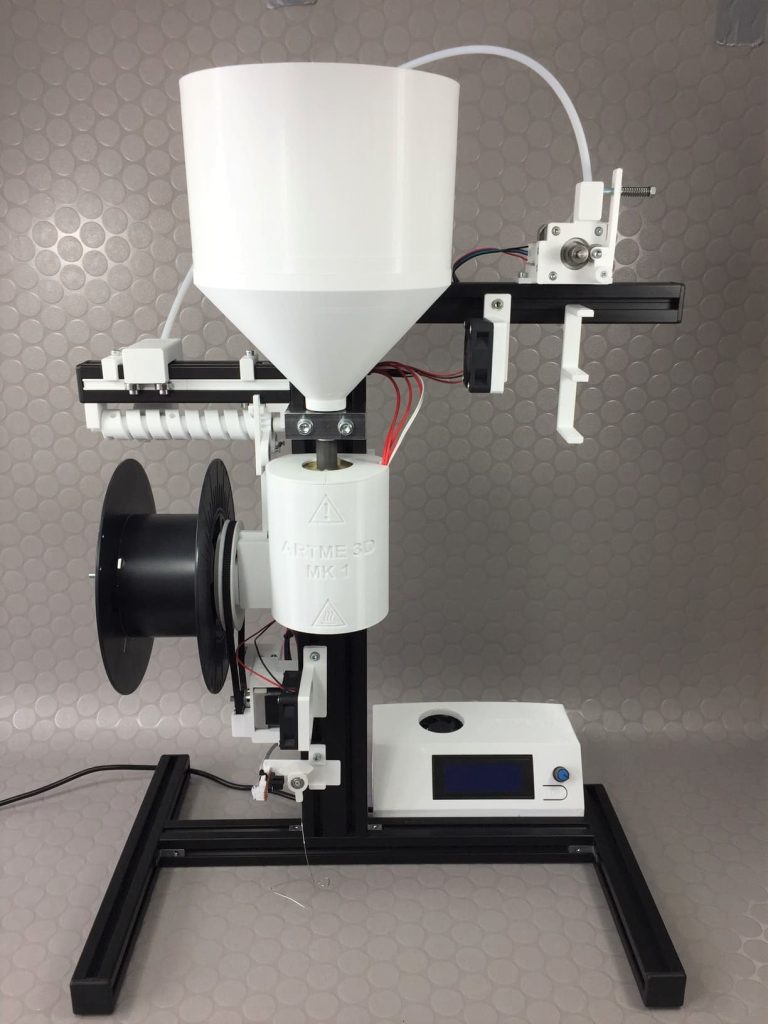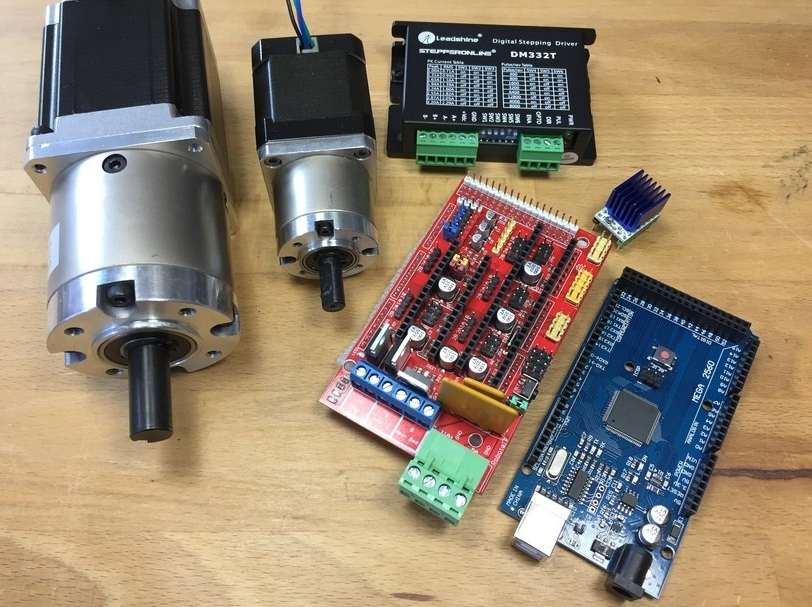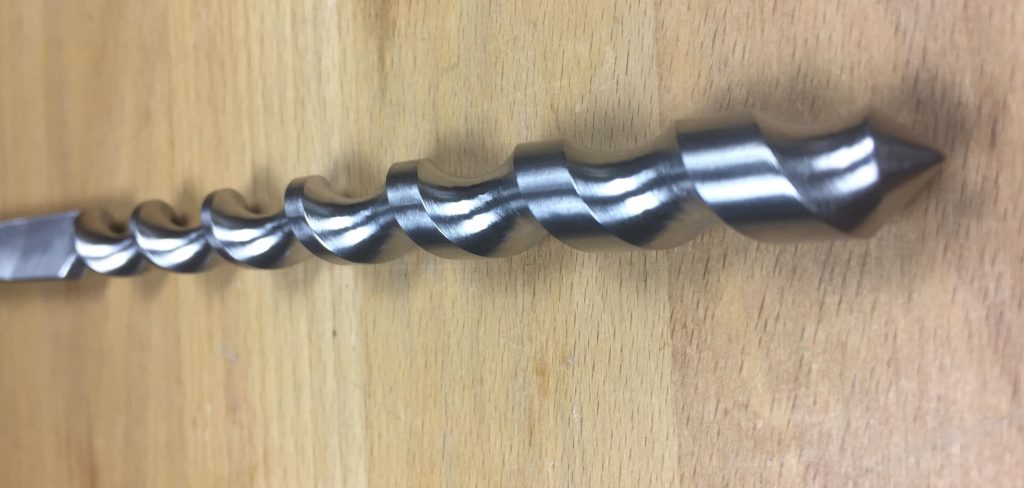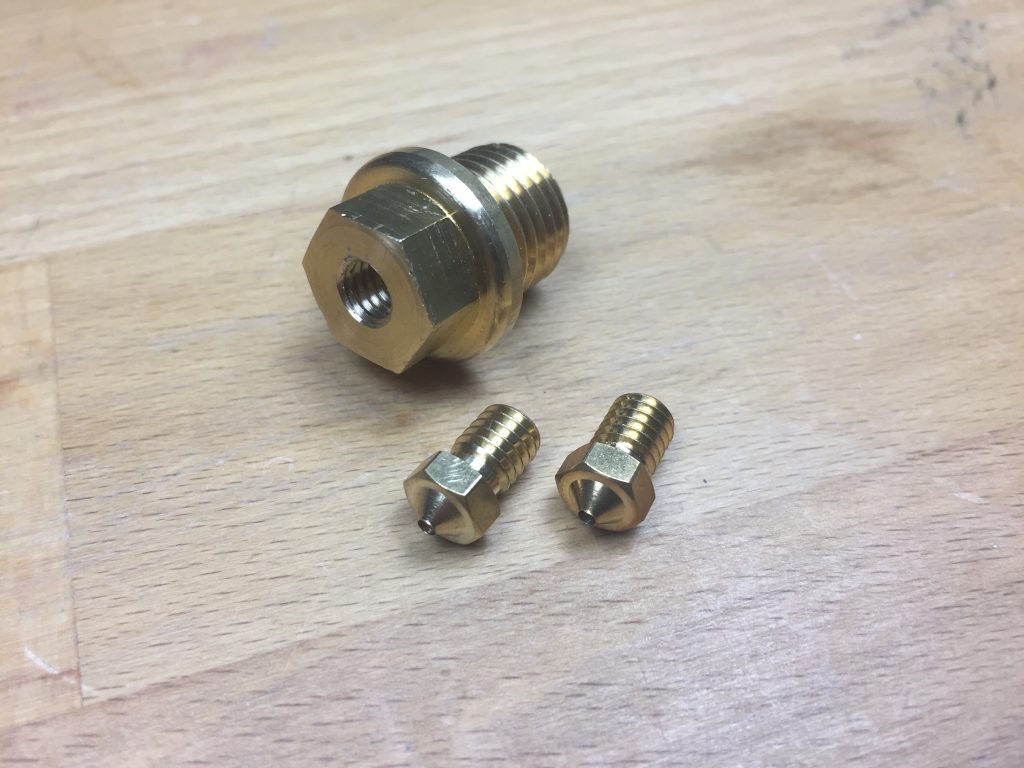Desktop Filament Extruder MK1 by ARTME 3D

Overview:
The Original Desktop Filament Extruder MK1 from ARTME 3D is an open source kit and has come a long way. It is a plastic – extruder in an unbeatably small but powerful design.
Special feature:
The extruder operates with an extruder screw with compression zone made of stainless steel. A winding unit is also integrated to wind the filament directly onto a spool. The winding unit of the MK1 can use spools with a capacity of 750g, 1000g or 2500g. The outer diameter can be maximum 300mm. The inner diameter for fixing the spool can be 40 to 60mm. The travel of the filament guide is max 90mm in width. And this with a footprint of just 31 x 46 cm. It is also possible to process self-produced (shredded) granules from 3D printing waste.
Drive:

The drive consists of a powerful and infinitely variable Nema23 stepper motor with planetary gear, which is controlled via a digital stepper motor driver. The rewind unit and pull unit are each driven by Nema17 stepper motors.
Control:
An Arduino with ramps board and LCD display handles the control. The rewinding works automatically. The filament diameter can be calibrated from 1.75 to 2.85mm by selecting the nozzle size and the filament’s own weight to the desired diameter. After the filament length has been set, the extruder switches off automatically.
Processable materials and extruder screw options:
The extruder has two different extruder screw options, which must be selected at the time of purchase:
- The extruder screw (high compression) is adapted to process shredded 3D printing waste made of PLA, ABS and PETG. In addition, it can also be used to process certain plastics in pellet form such as PLA grades (optimized for 3D printing), ABS and PP.
- The extruder screw (low compression) is adapted to the processing of plastics in pellet form such as PLA, ABS, ASA, PETG, PP. Processing of nylon, PA, PS or other engineering plastics cannot be guaranteed, but is often possible. However, the extruder may be able to extrude these materials, but the winding and calibration into dimensionally stable filament may not work. This is because these plastics have different viscosities or solidify very quickly. This is where the calibration and winding of this system reaches its limits. Therefore, the processing of these materials cannot be guaranteed at present.
Power supply:
The extruder is powered by 12V safety extra-low voltage and due to its high efficiency it requires little power, so you can run it e.g. with a cheap and safe table power supply. (Not included in the scope of delivery). Carbon neutral operation via solar cells is also possible.
Open Source:
The complete documentation and the necessary 3D printing files can be found for download here. The Original Desktop Filament Extruder Mk1 by ARTME 3D is an open source project used under a CC BY-SA license (https://creativecommons.org/licenses/by-sa/4.0/):
You may:
– Use, modify and share any content.
Under the following condition:
– Mention my name: David Thönnes of ARTME 3D
– Link my project: www.artme-3d.de
– State what has been changed
– Publish under the same license
Languages
The documentation is currently available in English and German. The menu language of the controller is currently only available in English. For translation into other languages I recommend deepl.com. There you can upload the downloaded PDF files of the documentation and translate them into the desired language.
Acknowledgements::
A big thank you goes to Filip Mulier. He wrote the firmware „Marlin-Mackerel“ and published it „open source“. This made this project possible..
You can find his original data at https://github.com/filipmu/Marlin-Mackerel.
For the Desktop Filament Extruder Mk1 the following was edited:
- User interface changed
- Device parameters changed
- safety functions (thermal runaway and killswitch) integrated
Development aspects:
- Miniature design to enable decentralized application where plastic can be recycled or filament is to be produced at low cost.
- Short cycle times to minimize damage to the plastic to enable many recycling processes.
- Open source to allow everyone access to successful recycling.
- Process stability through high-quality and well-designed components.
- Comfortable control and easy operation.
- Easy and fast adjustment of filament diameter.
- Inexpensive to buy as a kit.
Technical data:
- Dimensions: 460mm wide, 660mm high, 350mm deep.
- Power supply: 12V DC safety extra-low voltage
- Power consumption: 60 to 90 watts (depending on material type), 140 watts when heating up. (Required power supply for mains operation: output voltage 12VDC, output current 12.5A.
- Maximum extruder temperature: 260°C
- Maximum speed: 25 RPM
- Filament diameter accuracy: +/- 0.04mm when using granules/pellets. +/- 0.06mm when using shredded 3D printing waste.
- Maximum extrusion output without filament calibration, without melt filter and with 3mm nozzle:: 500 grams per hour (tested with PLA and speeds between 30 and 35 rpm).
- Normal extrusion line with filament calibration: 150 to 300 grams per hour (0.15 to 0.35 kg/h), depending on the material. (Cooling, calibrating and rewinding will slightly reduce the maximum extrusion rate).
- Maximum system speed (producing filament true to size and rewinding): 0.7m to 1.6m per minute. Experience shows that it takes on average about 4 to 7 hours to produce about 1kg of filament with 1.75mm diameter.
- Extruder screw: 3 zones stainless steel extruder screw with 12mm diameter. Compression ratio approx. 2:1. L/D ratio: 10:1.
- Tested materials: PLA, ABS, PETG, TPE, PP.

Operation and diameter calibration:
The plastic granules are melted by the extruder and leave the die as a soft plastic filament. The soft plastic filament is guided in an arc to the pull motor. On its way to the pull motor, the filament is cooled and solidifies. A sensor measures the height at which this filament sheet hangs. When the extruder produces filament faster, the sheet lowers. The sensor reports this to the control system, which increases the speed of the traction motor. Due to this regulation, the filament sheet always hangs at the same height and thus the tractive force on the filament is always the same. This allows a very accurate diameter setting. Slight fluctuations in the extrusion are also compensated in this way. This is particularly important when processing regrind. The controller would also be prepared to use a Hall sensor to directly detect the filament diameter, but the existing system often gives better results, so this is only an experimental option for hobbyists.
So the desired filament diameter is calibrated by the filament’s own weight, as well as the temperature setting and other adjustments. With the experience values in the documentation and after some practice, this start-up process is done in a few seconds to minutes. The documentation can be found at www.artme-3d.de/support.
Nozzle size:
Caution, the nozzle size only very roughly defines the filament diameter. When leaving the nozzle, some types of plastic expand. For more details see the instruction manual in the documentation. The kit is supplied with two nozzle sizes based on experience:
- Nozzle size 1.5mm results in 1.75mm filament with ABS
- Nozzle size 1.7mm results in 1.75mm filament with PLA.
- The nozzles can be exchanged or drilled out cheaply and quickly. (Standard 3D printer nozzle, E3D V6 style)

Included tools in the kit:
The kit includes the following tools:
- Tubular socket wrench 6x7mm
- Tubular socket wrench 13x17mm
- Allen wrench 1.5mm
- Allen wrench 2.0mm
- Allen wrench 3.0mm
- Allen wrench 4.0mm
- Allen wrench 5.0mm
- Warding file
Additional accessories and tools needed:
If you purchase a kit from ARTME 3D, you will need the following material, which is not included, to build and operate the extruder:
- 3D printed parts (white parts on the photos, files for download at www.artme-3d.de/support)
- Table power supply 12VDC 10A (Attention: In countries with 110/120V mains voltage you have to choose a power supply with 12,5A output current).
- An empty filament spool (diameter inner hole 50 to 60mm).
- Required tools:
- Phillips screwdriver PH1
- Slotted screwdriver 3mm
- Wrench size 8
- Hammer
- Sandpaper/Files
- Superglue
- rubber gloves, dust mask
- Access to a vice is an advantage.
- If the 3D printer used for the 3D printed parts is not calibrated very accurately, it may be necessary to have a drill with 3.5mm, 5.5mm and 12mm drill bits.
- Needle nose pliers and wire stripper is advantageous
- Scissors
- Electronic caliper gauge to measure the filament diameter (good quality!)
- Aluminiumfoil
- Folding rule
Skills and Difficulty Level:
The construction of this extruder is a little more complex than, for example, the construction of a 3D printer. Among other things, the following activities must be performed::
- Printing of a large number of parts (possibly several days of printing time and. approx. 1 to 1.4 kg material consumption).
- The reworking of 3D printed parts.
- Filing of grooves in the feed zone of the extruder tube with the key file. (The file is included in the kit).
- Wiring the electronics
Labor requirements:
Depending on your experience in assembling such kits, you will need to allow between 6 and 15 hours of time for assembly.
Support me:
The development and documentation of this project so far required hundreds of hours of work in 3 years, as well as high investments in materials and machinery. If you would like to support me in the development and free publication of projects of this kind, I will be happy about a small donation via paypal to paypal@artme.de.
Scope of delivery:
See the table for the extruder parts list. All parts are included in the kit except for the stl files and the power supply.